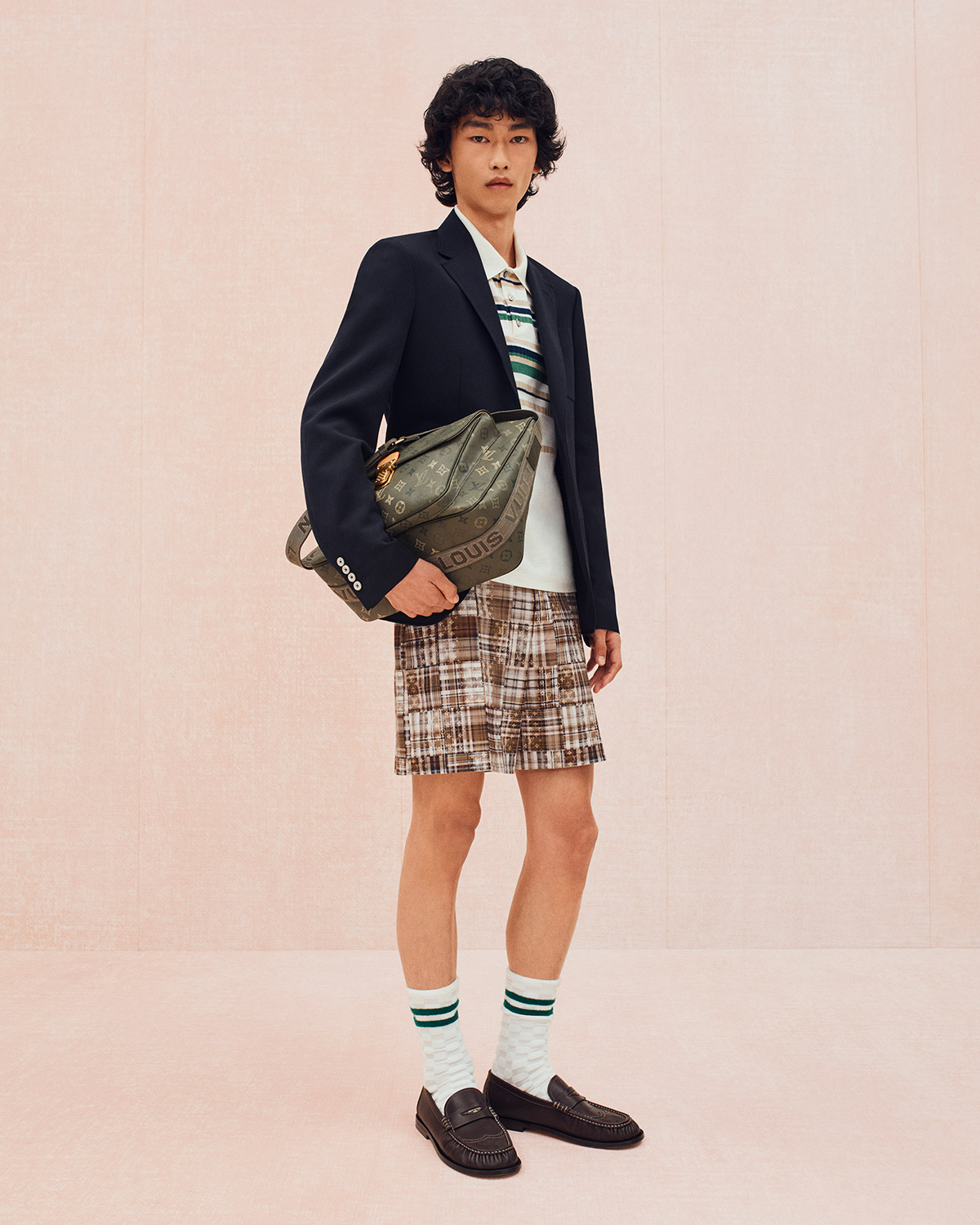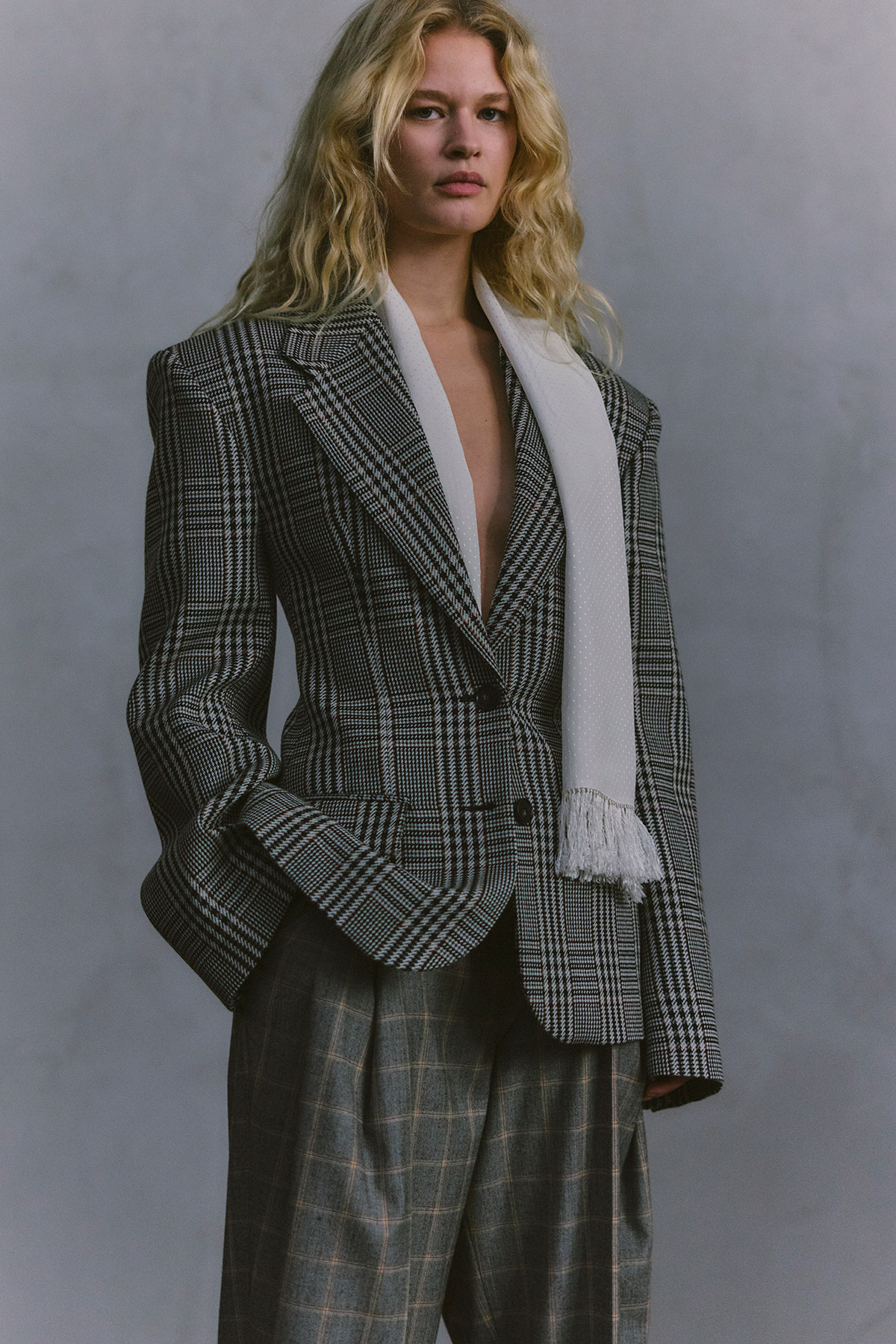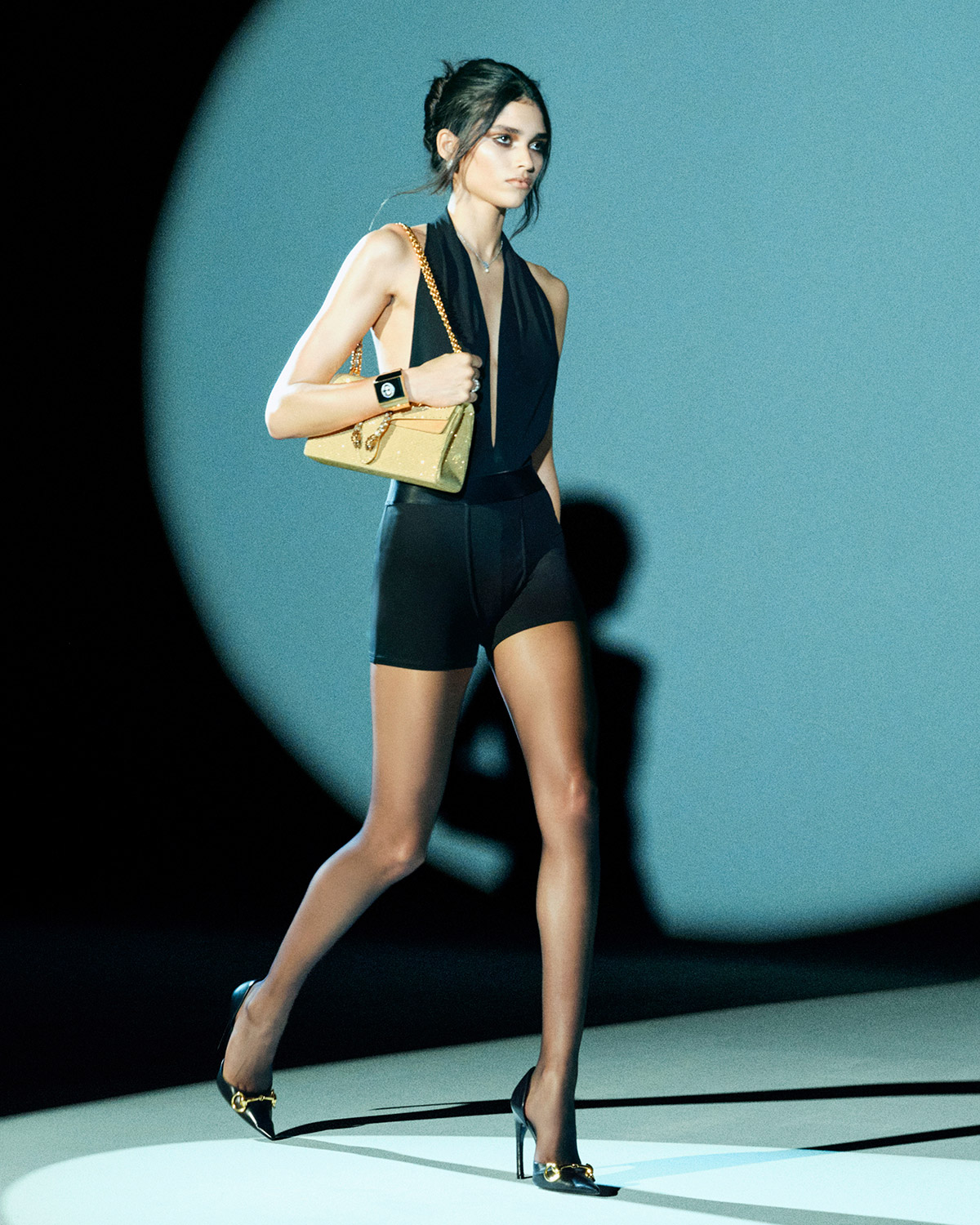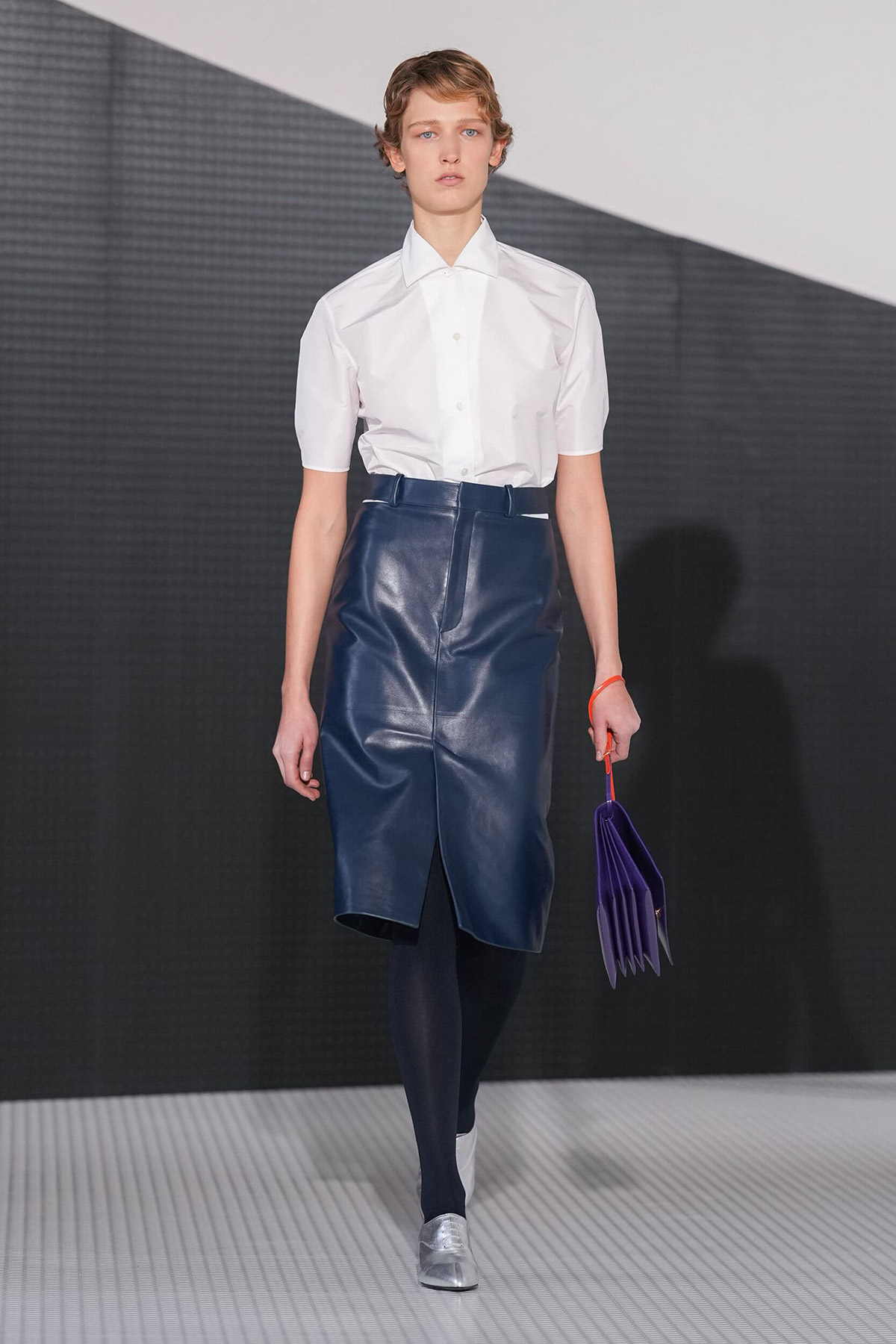
Summary
- Simone Bellotti debuted as Jil Sander’s Creative Director for Spring/Summer 2026, marking a decisive aesthetic shift away from his predecessors.
- The collection emphasized a return to the house’s “purist” roots, prioritizing rigorous minimalism, architectural tailoring, and precise silhouettes balanced with high-intensity color.
- Staged at the brand’s Milan headquarters for the first time since 2017, the show delivered a vision defined by reconnection with the label’s core codes.
A new chapter for Jil Sander commenced this Wednesday as Simone Bellotti presented his debut collection as brand’s new Creative Director. The Spring/Summer 2026 show marked a significant homecoming, staged at the brand’s Milan headquarters in the historic Piazza Castello—a venue unused for their runways since 2017.
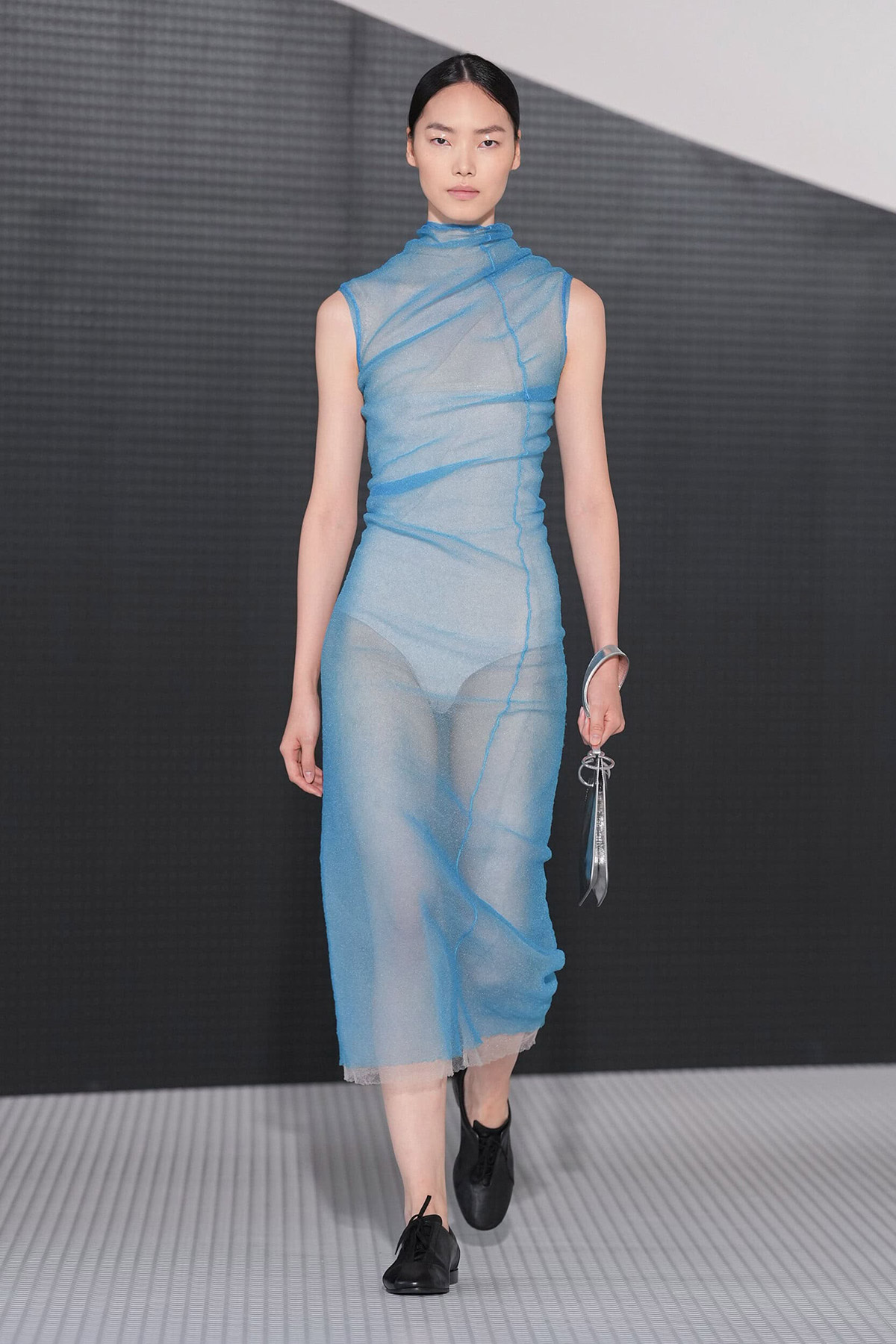
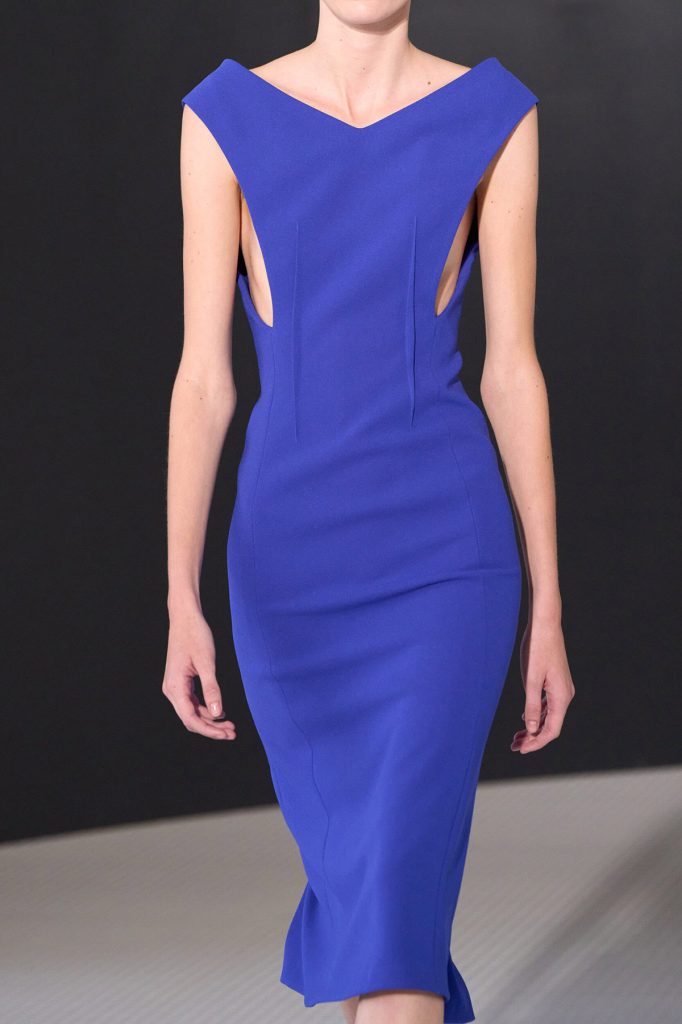
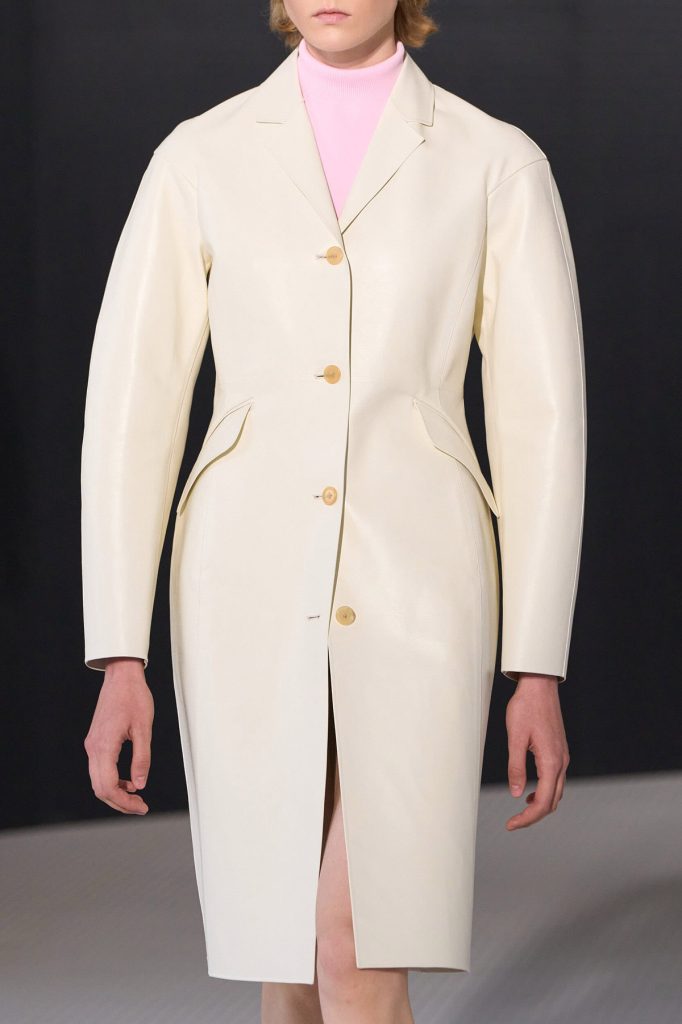
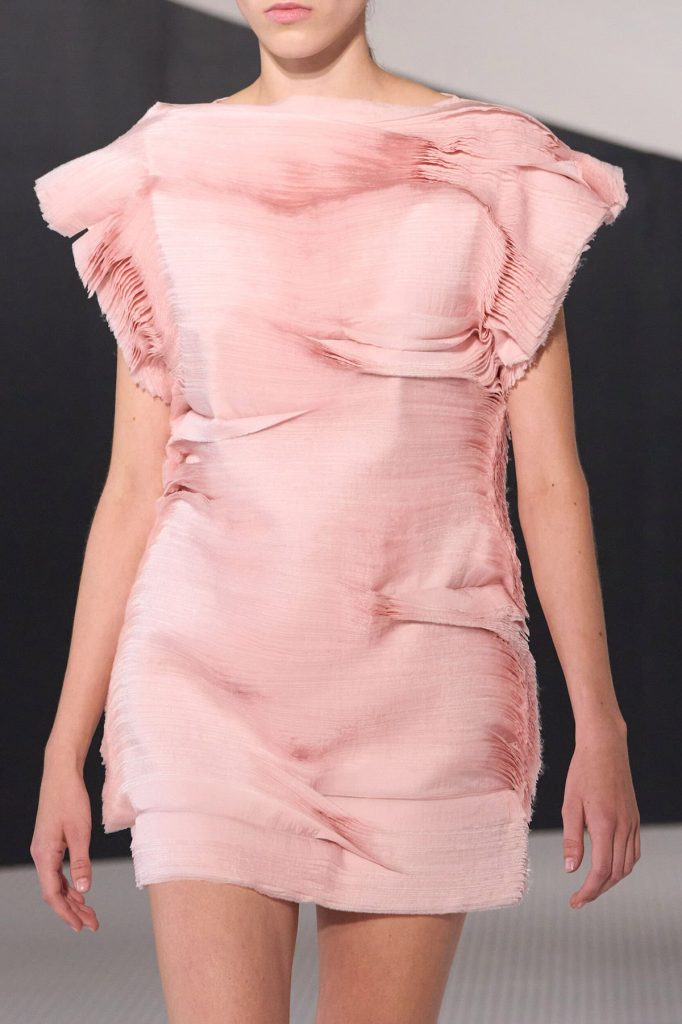
Bellotti immediately established a distinct departure from the aesthetic cultivated by his predecessors, Luke and Lucie Meier. The cinematic flourishes, expressive prints, and ornate embellishments that characterized the past seven years were conspicuously absent. In their place, Bellotti introduced a rigorous focus on form, texture, and silhouette.
This pivot signals a return to the stringent minimalism often associated with the house, recalling the graphic clarity and “purism” notably seen during the Raf Simons years (2005-2012).
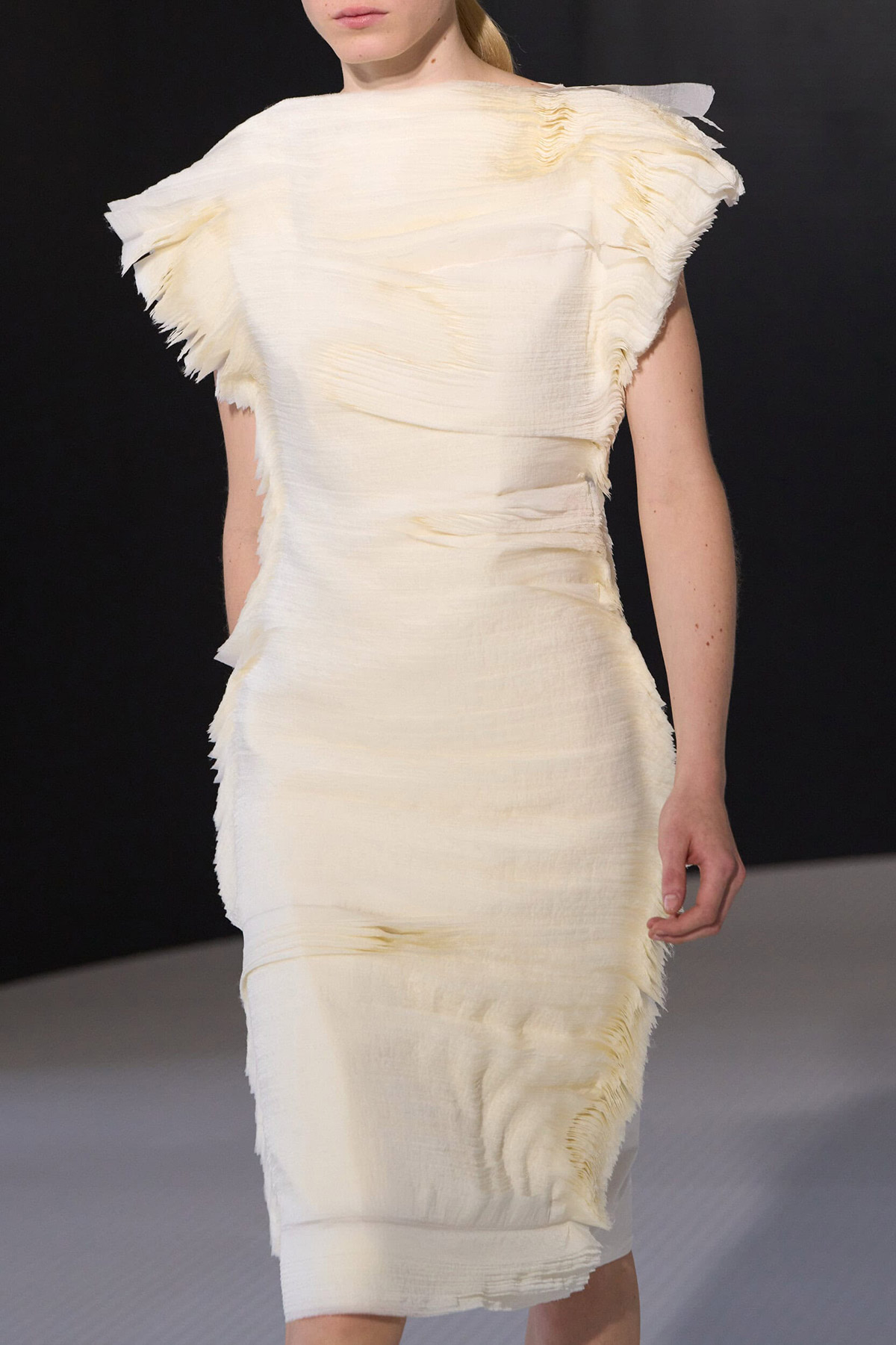
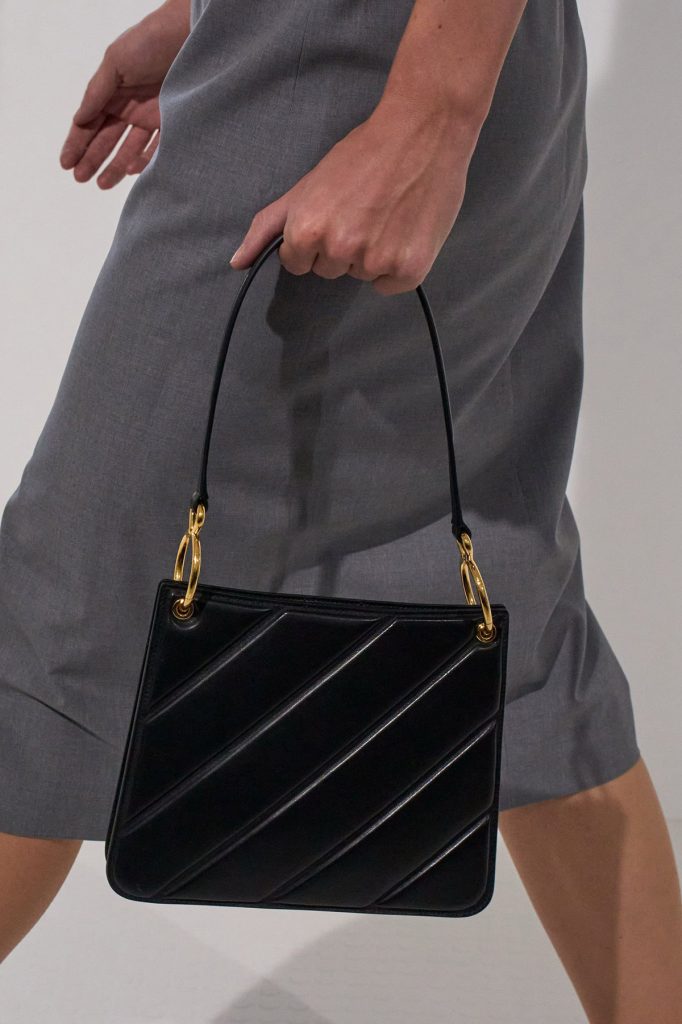
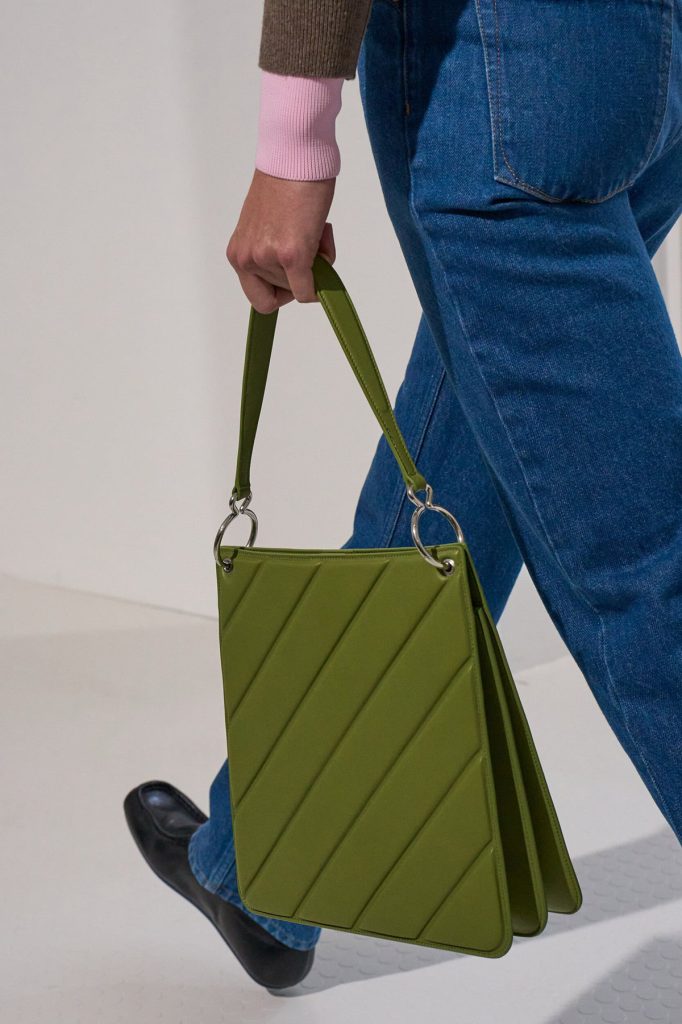
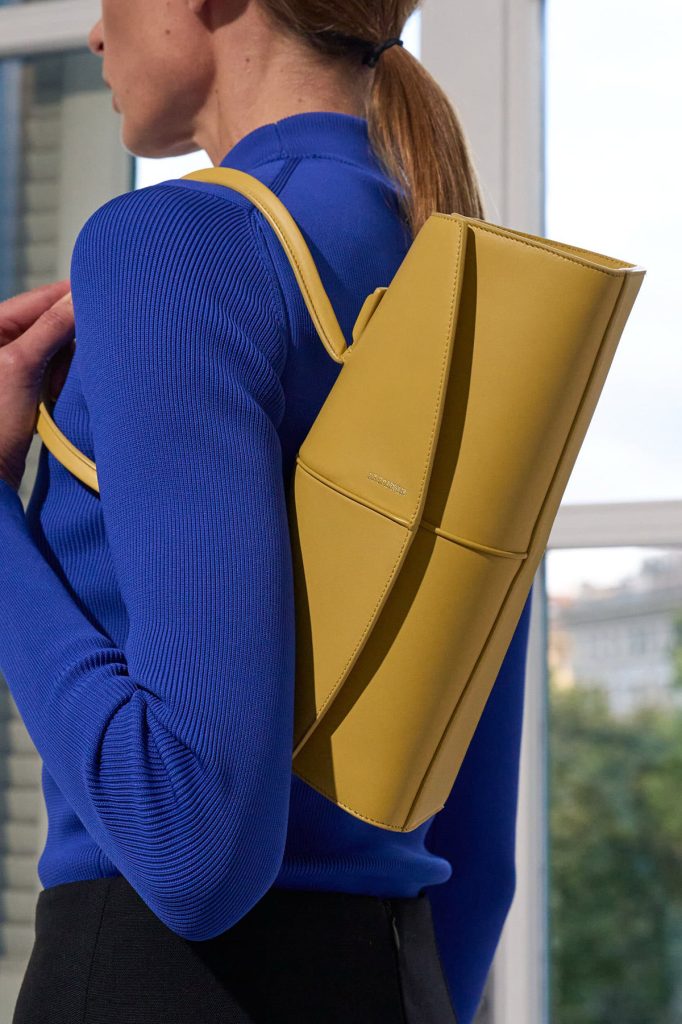
The opening looks demonstrated this renewed focus on structural tailoring. Bellotti presented slim-cut suits accented with exaggerated pocket details, alongside coats constructed with armor-like shoulders and sharply cinched waists, creating silhouettes that felt both protective and exact. Geometrically paneled skirts reinforced this dedication to clean, uncompromising lines.
While the forms were restrained, color served as a primary tool for impact. The collection was grounded in the classic Sander neutral palette, charcoal, taupe, black, and pristine white, but Bellotti injected bursts of high-intensity hues. Electric blue, stark primary red, and ultraviolet were deployed decisively. The interplay of these shades was particularly sophisticated, offering striking combinations such as deep purplish navy against buttery yellow, and vibrant cherry red juxtaposed with ultramarine.
The collection balanced this rigidity with moments of textural experimentation. An austere violet smock dress, defined by a sharp central fold, highlighted the tension between austerity and innovation. Elsewhere, materials like liquid chrome and floral PVC offered unexpected contrasts. Footwear, a known strength from Bellotti’s previous tenure at Bally, was notably understated, focusing entirely on flat profiles.
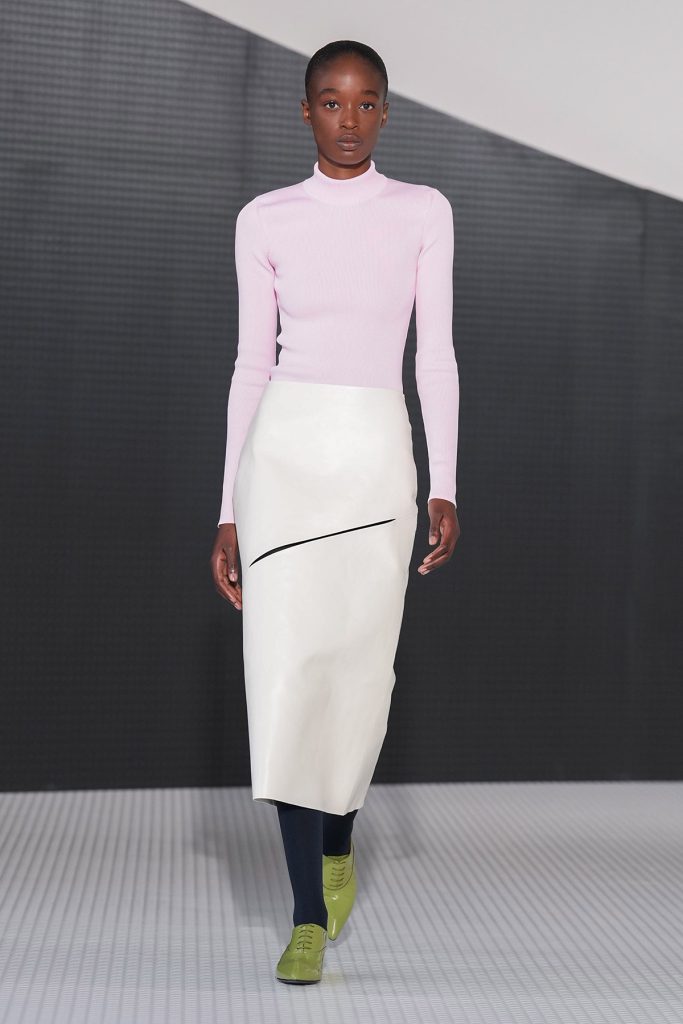
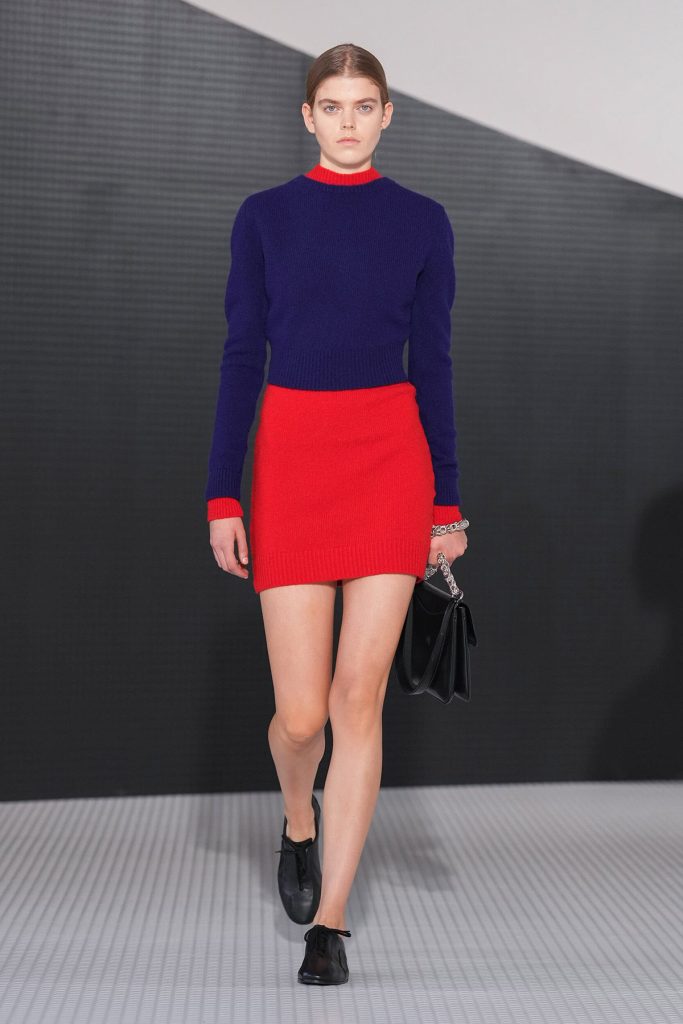
Appointed earlier this year following the Meiers’ departure, Bellotti has indicated a desire to authentically engage with the origins of the house. Prior to the show, this intention was previewed through nods to Jil Sander’s beginnings in Hamburg. This included a collaboration with electronic musician Bochum Welt, which provided the soundtrack. It was a subtle historical link, as Welt’s debut release in 1994 coincided with the opening of the Milan headquarters where the collection was shown.
Simone Bellotti’s debut successfully resets the tone for Jil Sander. By balancing rigorous tailoring with confident color and material nuance, the Spring/Summer 2026 collection delivered a vision defined by control, coherence, and a restored sense of clarity.


